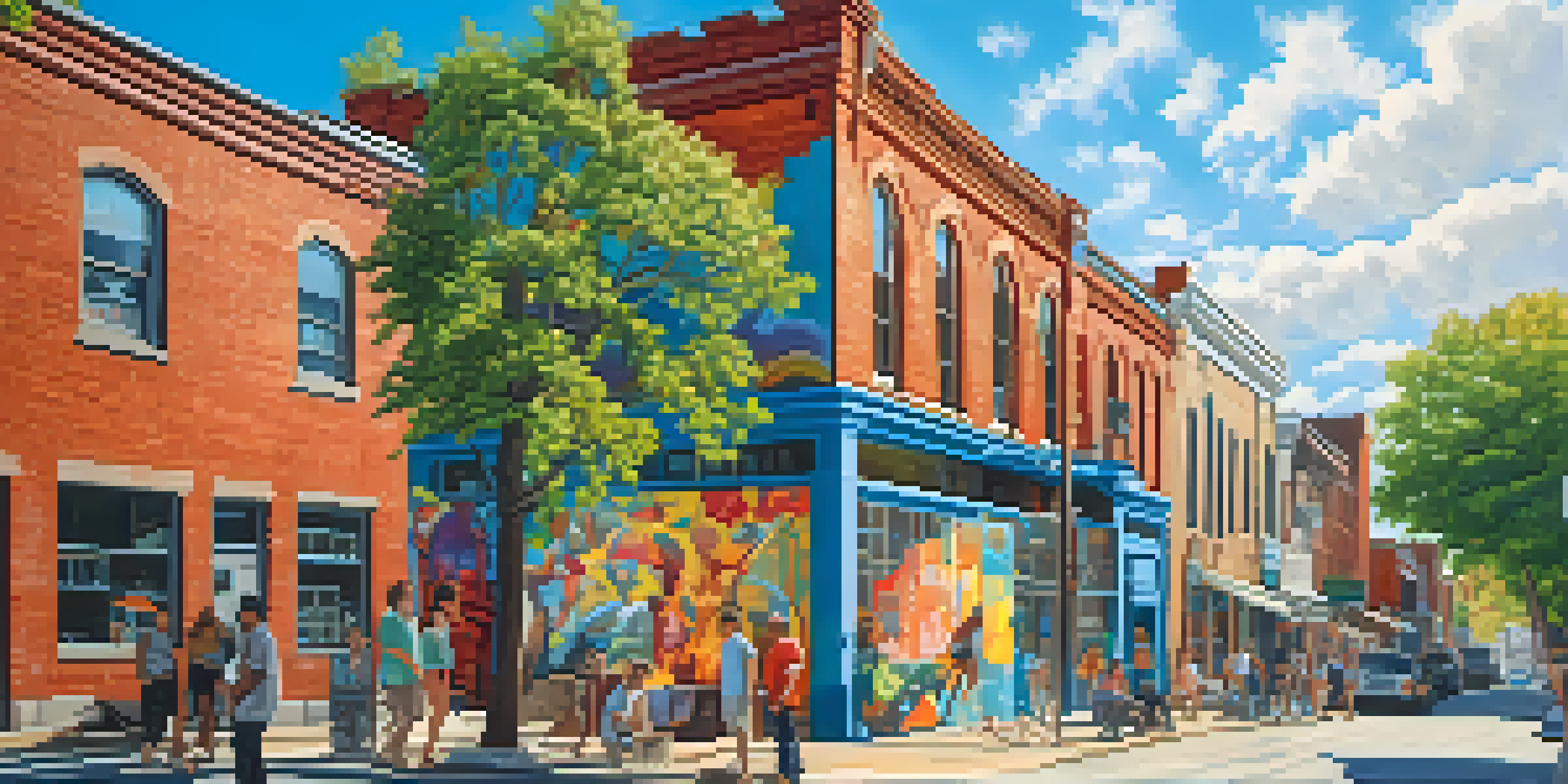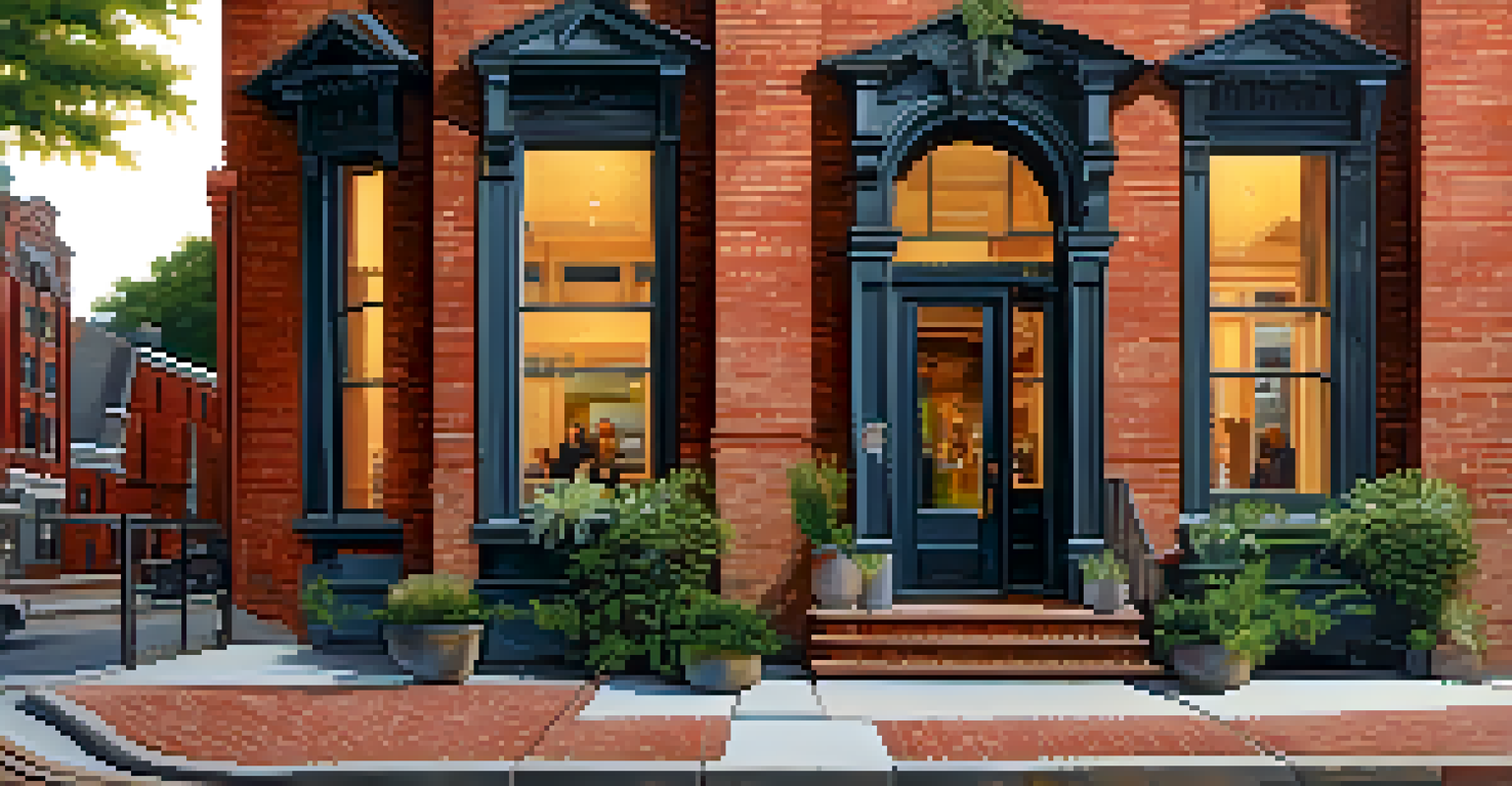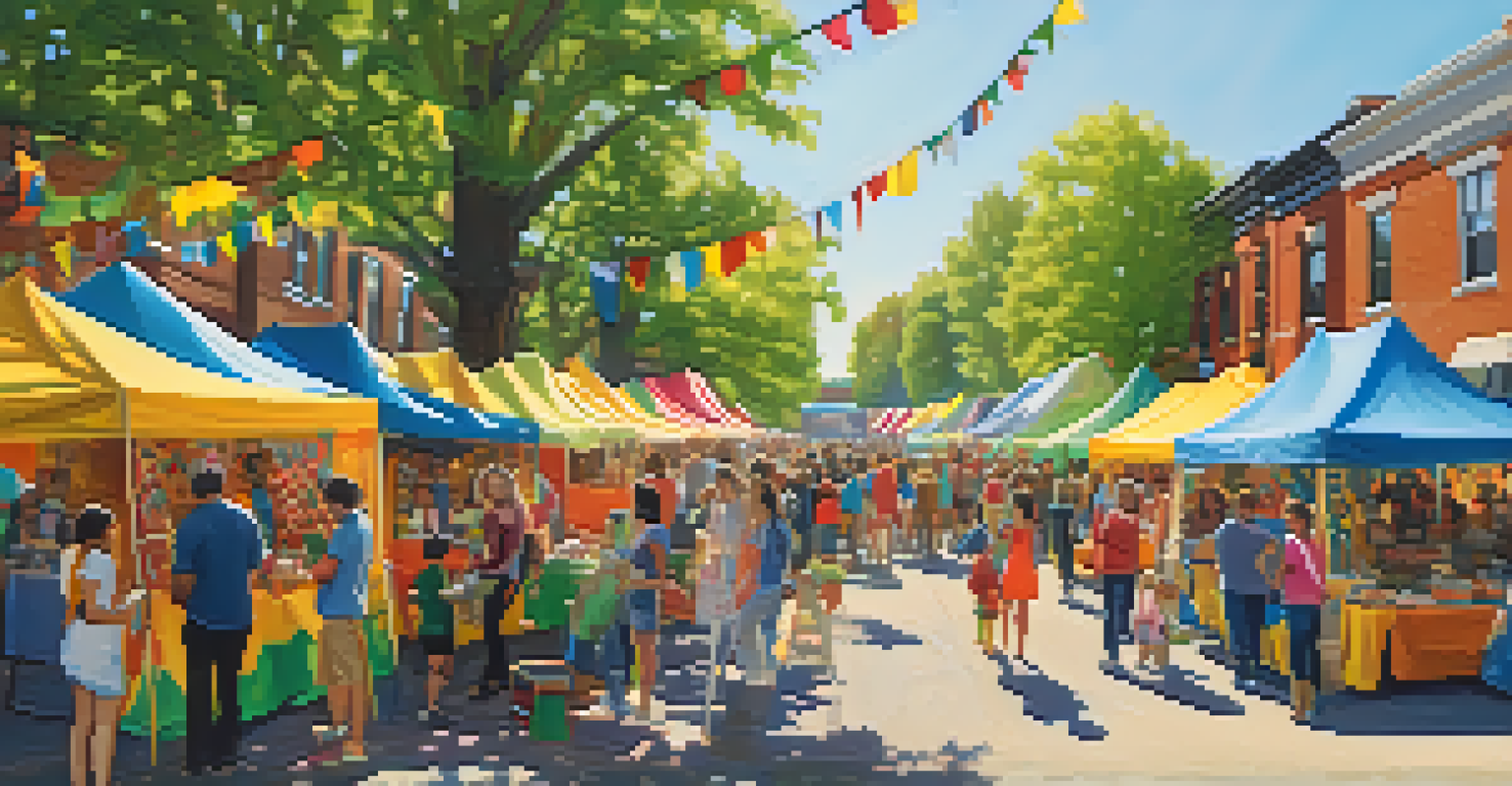History of Cabbagetown: From Mill Town to Arts District

The Origins of Cabbagetown: A Mill Town Emerges
Cabbagetown's story begins in the mid-1800s when it was primarily a mill town, known for its textile factories. These mills attracted workers from various backgrounds, leading to a diverse community that thrived on hard work and resilience. The area was named after the cabbage fields that once flourished, a testament to the agricultural roots that preceded industrialization. Life in Cabbagetown revolved around the mills, shaping the social fabric of the neighborhood.
Community is a place where you can feel at home, and a home where you can feel part of the community.
As the mills operated at full capacity, the community grew rapidly, with homes being constructed to accommodate the influx of labor. This growth fostered a sense of camaraderie among residents, who often gathered for social events and celebrations. Despite the grueling work hours, the neighborhood pulsed with life, creating a unique culture that would eventually influence its future identity. The economic boom, however, was not without its challenges, as working conditions in the mills were often harsh.
By the late 19th century, Cabbagetown was a bustling hub of activity, with schools, churches, and local businesses sprouting up to support the growing population. The mill's influence was palpable in every aspect of life, from local politics to community events. This foundation would play a crucial role in shaping the community's resilience and adaptability, qualities that would be critical during times of change in the decades to come.
The Decline of the Mills and Economic Hardship
As the 20th century progressed, Cabbagetown faced significant challenges with the decline of the textile industry. The mills that once provided livelihoods for many began to shut down, leading to economic hardship and a sense of uncertainty among residents. This decline was marked by abandoned buildings and an exodus of families seeking better opportunities elsewhere, which transformed the once vibrant neighborhood into a shadow of its former self.

The loss of jobs created a ripple effect, straining community resources and leading to increased poverty rates. Many of the homes were left empty or fell into disrepair, contributing to a decline in property values. The vibrant culture that had characterized Cabbagetown began to fade, replaced by a sense of struggle as residents grappled with the economic fallout. Yet, amid the decline, a resilient spirit remained, as longtime residents clung to their community ties.
Cabbagetown's Industrial Roots
Cabbagetown originated as a thriving mill town in the mid-1800s, fostering a diverse and resilient community.
Despite the hardships, some residents began to envision a brighter future for Cabbagetown. Community meetings and grassroots efforts were initiated to address the issues plaguing the area, laying the groundwork for revitalization. This period, while challenging, ultimately sowed the seeds for a transformation that would redefine Cabbagetown and restore its sense of identity and purpose.
The Beginnings of Revitalization in the 1970s
The 1970s ushered in a new era for Cabbagetown, as artists and creative individuals began to flock to the area, drawn by its affordable housing and unique character. These pioneers saw potential in the neglected buildings and empty lots, envisioning a vibrant arts community that could breathe new life into the neighborhood. This movement marked the beginning of a slow but steady revitalization process that would alter Cabbagetown's trajectory.
Art is not what you see, but what you make others see.
As artists settled in, they transformed old mill buildings into studios and galleries, reimagining the space that had once been filled with machinery and labor. Local art shows and exhibitions began to emerge, fostering a sense of creativity that resonated with both residents and visitors. This influx of artistic energy not only attracted more people to the area but also sparked renewed interest in the historical significance of Cabbagetown.
Community organizations were formed to support the growing arts scene, emphasizing collaboration and inclusivity. These efforts helped to re-establish Cabbagetown as a destination for culture and creativity, signaling a shift in the neighborhood's identity. The 1970s laid the groundwork for a thriving arts district, demonstrating that even in the face of adversity, community spirit and creativity could forge a new path forward.
Cabbagetown's Artistic Renaissance in the 1980s
The 1980s marked a significant turning point in Cabbagetown's history, as the artistic renaissance began to take root. Local artists continued to expand their presence, leading to the establishment of art collectives and community events that celebrated creativity. The neighborhood became known for its vibrant murals, sculptures, and public art installations, reflecting the diverse voices and experiences of its residents.
Cabbagetown's transformation into an arts district attracted attention from outside the community, bringing visitors eager to experience its unique charm. Galleries and boutiques began to pop up, offering local artists a platform to showcase their work. This influx of artistic talent not only revitalized the economy but also fostered a renewed sense of pride among residents who embraced their neighborhood's evolving identity.
Revitalization Through Art
In the 1970s and 1980s, artists transformed Cabbagetown into a vibrant arts district, breathing new life into the community.
The community's commitment to the arts created a nurturing environment for emerging talents, solidifying Cabbagetown's reputation as a hub for creativity. Events like art walks and festivals became popular, drawing people from all over to experience the neighborhood's vibrant culture. As the 1980s progressed, Cabbagetown was no longer just a mill town or a struggling community; it had transformed into a thriving arts district with a unique character all its own.
Cabbagetown Today: A Blend of History and Modernity
Today, Cabbagetown stands as a testament to resilience and transformation, blending its rich industrial history with a modern artistic vibe. The neighborhood has become a sought-after destination, known for its eclectic mix of galleries, shops, and eateries that celebrate local talent. The historic mill buildings have been repurposed into stylish lofts and creative spaces, preserving the architectural charm while adapting to contemporary needs.
Community events and festivals continue to thrive, drawing locals and visitors alike to celebrate art, culture, and heritage. The annual Cabbagetown Art and Community Festival showcases the talents of local artists while fostering a spirit of collaboration and connection among residents. This vibrant atmosphere is a reflection of the neighborhood's journey from a struggling mill town to a dynamic arts district.
Despite its evolution, Cabbagetown remains deeply rooted in its history, with efforts to honor its past through preservation initiatives. The community actively engages in discussions about development and cultural heritage, ensuring that the spirit of Cabbagetown continues to thrive. As it navigates the complexities of modern urban life, Cabbagetown stands as a shining example of how a community can reinvent itself while staying true to its origins.
Community Spirit: The Heart of Cabbagetown
At the core of Cabbagetown's transformation is its strong sense of community spirit. Residents have always played an active role in shaping the neighborhood, advocating for initiatives that reflect their values and aspirations. This collaborative mindset has fostered a culture of inclusivity, where diverse voices come together to celebrate the unique character of Cabbagetown.
Community engagement is evident in the numerous local organizations and initiatives that have emerged over the years. Whether it's neighborhood clean-up days, public art projects, or cultural celebrations, residents continuously seek ways to enhance their environment and strengthen community bonds. This proactive approach has contributed to a sense of ownership and pride among residents, reinforcing their connection to the neighborhood.
Community Spirit Drives Change
The strong sense of community spirit in Cabbagetown has enabled residents to collaboratively enhance their neighborhood and celebrate its unique identity.
The community spirit of Cabbagetown is not just about addressing challenges; it’s also about celebrating successes together. Friends and neighbors gather for events that honor local traditions, showcasing the rich tapestry of experiences that define the area. This unwavering commitment to community and collaboration is what truly sets Cabbagetown apart, ensuring its legacy as a vibrant and welcoming place for generations to come.
Looking Ahead: The Future of Cabbagetown
As Cabbagetown continues to evolve, its future holds exciting possibilities. The blend of art, culture, and community engagement creates a dynamic environment that attracts new residents and visitors. However, this growth also presents challenges that require thoughtful planning and collaboration to maintain the neighborhood's unique character and inclusivity.
Local leaders and residents are actively engaged in discussions about sustainable development and preservation efforts. Balancing the need for growth with the desire to honor the past is a key focus, ensuring that Cabbagetown remains a place where history and modernity coexist harmoniously. This forward-thinking approach reflects the community's commitment to fostering a vibrant, livable space for everyone.

Looking ahead, Cabbagetown’s identity as an arts district will likely continue to flourish, drawing inspiration from its rich heritage while embracing contemporary influences. As new generations of artists and residents contribute to the neighborhood's narrative, Cabbagetown is poised to remain a beacon of creativity and resilience, celebrating the journey from a humble mill town to a thriving artistic community.